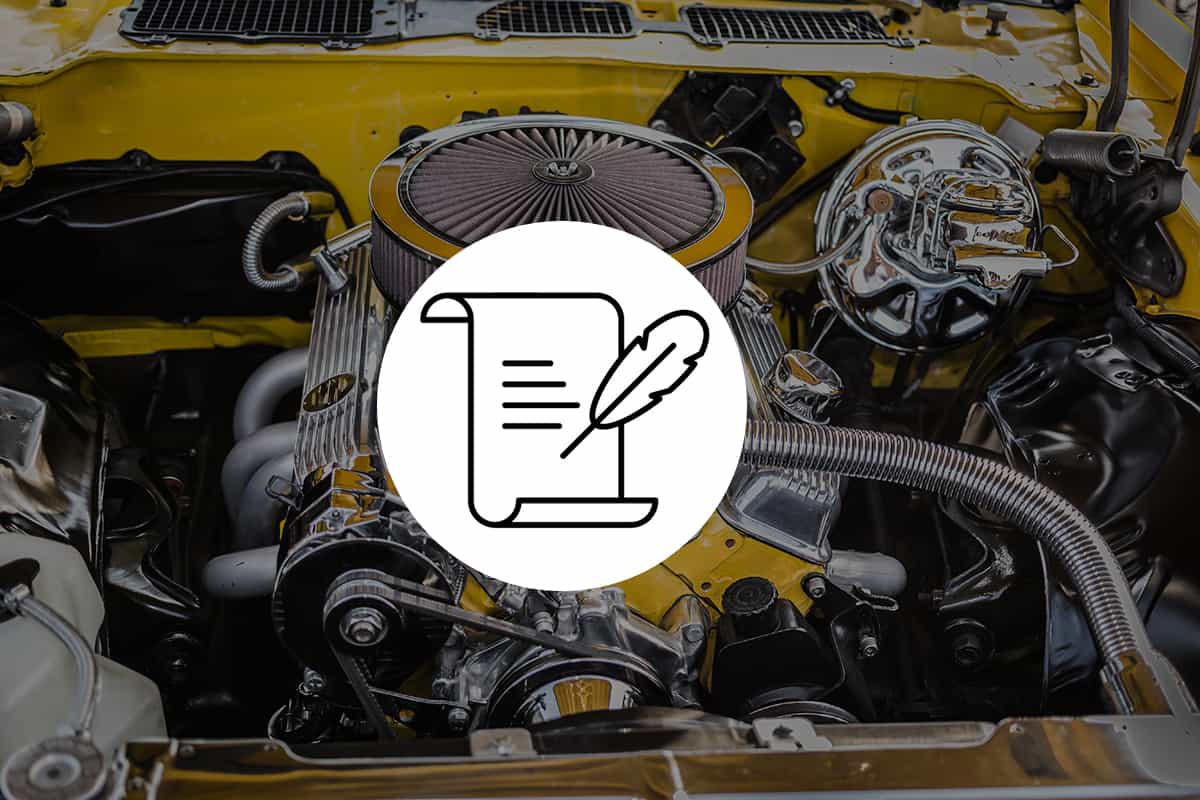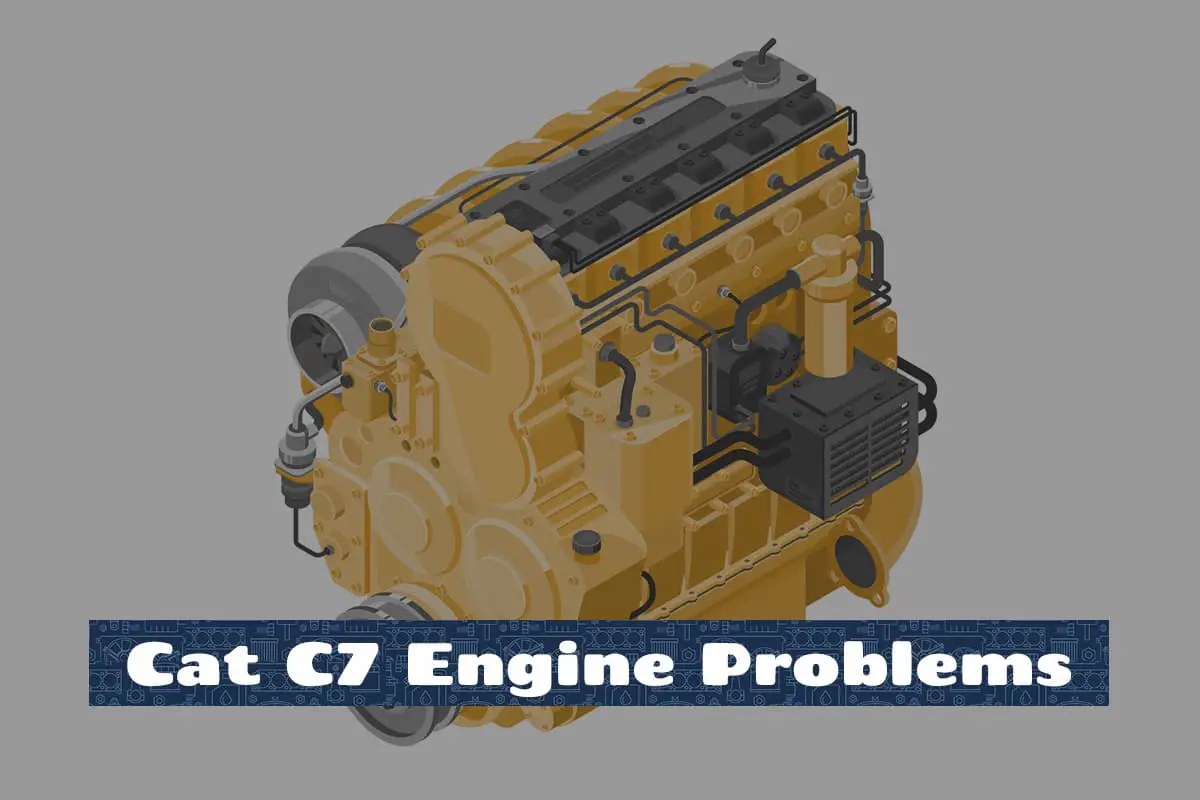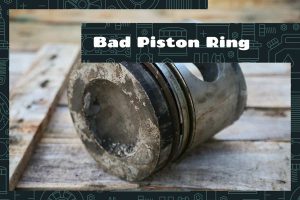The Cat C7 engine, a robust and versatile piece of machinery, has found its place in a variety of automotive applications. Designed by Caterpillar, it’s lauded for its performance capabilities, especially in heavy machinery. However, it has its share of challenges that users may face over its lifetime.
The Cat C7 engine has occasionally faced issues such as starting troubles, overheating, fuel injection problems, turbocharger malfunctions, and oil-related concerns.
This guide will take you through a brief history of this historical engine, common problems of the Cat C7 engine, and solutions to keep it running smoothly.
Historical Context of the Cat C7 Engine

The Cat C7 engine emerged as a product of the renowned Caterpillar Inc., a leader in the realm of heavy machinery and equipment. Launched in the early 2000s, it swiftly gained prominence for its use in a range of vehicles, particularly heavy machinery.
As a successor to the Cat 3126 engine, the C7 was designed to meet the rising stringent emissions standards of its time. Its incorporation of the Advanced Combustion Emissions Reduction Technology (ACERT) was a noteworthy advancement, allowing for cleaner burning and reduced emissions.
Cat C7 Engine Specs
| Specification Category | Specification Details |
| Applications & Industries | Agriculture
Ag Tractors Aircraft Ground Support Bore/Drill Rigs Chippers/Grinders And more |
| Power Rating | Maximum Power: 224 kW
Rated Speed: 1800-2200 rpm Minimum Power: 168 kW |
| Emission Standards | China Stage II
U.S. EPA Tier 3 Equivalent EU Stage IIIA Equivalent |
| General | Engine Configuration: Inline 6, 4-Stroke-Cycle Diesel
Bore: 110 mm Stroke: 127 mm Displacement: 7.2 l Compression Ratio: 16.2:1 Aspiration: Turbocharged Aftercooled (TA) Combustion System: Direct Injection Rotation from Flywheel End: Counterclockwise Aftertreatment: – |
| Engine Dimensions (Approximate) | Length: 1053 mm
Width: 758 mm Height: 1032 mm Weight – Net Dry: 588 kg (Basic Operating Engine Without Optional Attachments) |
Source: Cat.com
Common Issues Faced by Cat C7 Engine Users (and Solutions)
The Cat C7 engine, while revered for its durability and efficiency, has its set of challenges. Over the years, users have pointed out a handful of issues that they’ve encountered.
1. Overheating Issues
Engines operate under immense pressure, and while most are designed to handle high temperatures, certain conditions can push the engine beyond its thermal limits. Overheating can arise from a range of factors: a malfunctioning radiator, a broken water pump, or even a clogged coolant system. If left unchecked, overheating can lead to severe engine damage.
Fixes:
- Coolant Check: Regularly inspect the coolant level and ensure it’s within the recommended range. Refreshing the coolant periodically can also prove beneficial.
- Radiator Inspection: Ensure the radiator is free from debris and obstructions, which can hinder effective cooling. Clean the radiator fins and check for potential leaks.
- Water Pump Examination: A malfunctioning water pump can hinder coolant circulation. If you suspect pump issues, it’s wise to consult a professional or consider a replacement.
2. Oil Consumption
This is not just an issue of having to refill oil more frequently; excessive oil consumption can hint at underlying problems. Potential causes include worn-out piston rings, malfunctioning oil seals, or even issues with the turbocharger.
Fixes:
- Piston Rings: Worn-out piston rings can allow oil to seep into the combustion chamber. A compression test can help diagnose this, and the remedy often involves replacing the rings.
- Oil Seals and Turbocharger: Check the integrity of oil seals. Additionally, inspect the turbocharger for oil leaks or signs of wear. Replacement might be necessary if significant wear is detected.
3. Loss of Power
An engine that doesn’t deliver the expected power can affect the overall vehicle performance, from slower acceleration to challenges in hauling heavy loads. The root causes can range from clogged fuel filters, issues with the turbocharger, or even software glitches in the engine control module.
Fixes:
- Fuel Filter Replacement: A clogged fuel filter restricts fuel flow, leading to reduced engine power. Regularly changing the filter can rectify this.
- Turbocharger Inspection: Ensure the turbocharger is in optimal condition. Look for signs of damage or wear, and consider repair or replacement if necessary.
- Software Update: Occasionally, an engine control module (ECM) may need a software update to address power delivery issues. Consult with a Cat dealer for potential updates.
4. Start-Up Issues
Some Cat C7 engine owners have occasionally faced difficulties in starting up their engine, especially in colder climates. Possible reasons include a weak battery, faulty glow plugs, or even fuel quality issues, where the diesel fuel thickens in low temperatures.
Fixes:
- Battery Health: Regularly inspect the battery, ensuring terminals are clean and connections are tight. A battery tester can help gauge its health.
- Glow Plugs: In colder climates, glow plugs warm the engine, aiding the start-up. Faulty glow plugs can be replaced to rectify cold start issues.
- Fuel Quality: Ensure you’re using high-quality diesel, especially during colder months. Low-quality or winterized diesel can reduce start-up complications.
5. Excessive Exhaust Smoke
While some amount of exhaust smoke is standard for diesel engines, excessive or oddly colored smoke can be a red flag. Cat C7 engine users have occasionally reported black, white, or even blue smoke emanating from the exhaust. Each color can indicate a distinct issue: black often suggests incomplete combustion, white can be due to unburned diesel fuel, and blue might hint at burning oil.
Fixes:
- Black Smoke: This often points to incomplete combustion. Checking air filters and ensuring they’re clean can help. Additionally, inspecting injectors and ensuring they function correctly can reduce black smoke.
- White Smoke: This can arise from unburnt diesel fuel. Checking glow plugs, especially in colder conditions, can be beneficial. Additionally, an ECM diagnostic can pinpoint fuel delivery issues.
- Blue Smoke: Blue smoke hints at burning oil. Solutions can involve checking and replacing worn piston rings or valve seals. Ensuring the turbocharger is intact is also pivotal.
6. Noisy Operation
Engines aren’t supposed to be the quietest of machines, but a sudden increase in engine noise or unusual sounds can be concerning. Some Cat C7 users have reported knocking sounds, excessive ticking, or even whining noises coming from their engines. These noises can stem from a variety of issues, such as injector problems, timing chain wear, or even low-quality fuel use.
Fixes:
- Injector Examination: Noisy operations can sometimes be traced back to malfunctioning injectors. Consider a professional inspection or replacement.
- Timing Chain Check: A stretched or worn timing chain can produce a ticking sound. Regular inspection and replacement, when necessary, can curtail this.
- Fuel Quality: Low-quality fuel can be a culprit behind excessive engine noise. Ensure you’re refueling with recommended quality diesel.
FAQs
1. How often should I service my Cat C7 engine?
Generally, it’s recommended to conduct a basic service—like checking fluid levels, belts, and filters—every 250 to 300 hours of operation or every 15,000 miles, whichever comes first. However, for a comprehensive service, which includes checking the engine’s major components and systems, it’s ideal to follow a schedule of every 500 hours or 30,000 miles. Always refer to the engine’s manual or consult with a Cat dealer for specific maintenance intervals tailored to your engine’s usage and conditions.
2. Are aftermarket parts recommended for the Cat C7 engine?
Aftermarket parts can be a tempting choice due to their often lower prices compared to original manufacturer parts. However, while some aftermarket parts can be of good quality, they may not always meet the exact specifications or quality standards set by Caterpillar for the Cat C7 engine.
3. How can I improve the fuel efficiency of my Cat C7 engine?
Here are some tips to help you achieve better fuel efficiency with your Cat C7:
- Drive Smartly: Avoid rapid accelerations and sudden brakes. Smooth, consistent driving can optimize fuel consumption.
- Check Tires: Ensure your vehicle’s tires are inflated to the recommended pressure. Under-inflated tires can increase rolling resistance, leading to higher fuel consumption.
- Limit Idling: Extended idling can consume more fuel than you might think. If you anticipate being stationary for an extended period, consider shutting off the engine.
- Monitor Weight: Avoid carrying unnecessary weight in your vehicle or equipment. Extra weight means the engine has to work harder, using more fuel in the process.
While the Cat C7 engines are notorious for certain issues, they aren’t the only Caterpillar engines with notable problems. The Cat 9 engines also have their own set of challenges that are worth examining by potential buyers and current owners. Similar to the C7, the C9 has had instances of unreliability that have frustrated many users. To get a broader understanding of these engines’ issues, explore our in-depth article on the problems associated with the Cat C9 engine.






